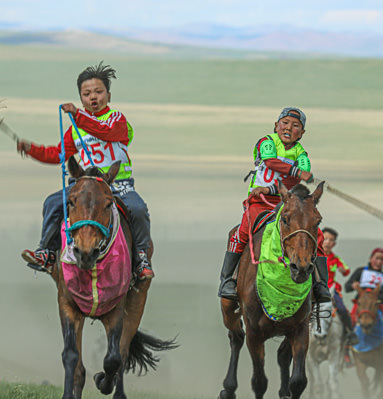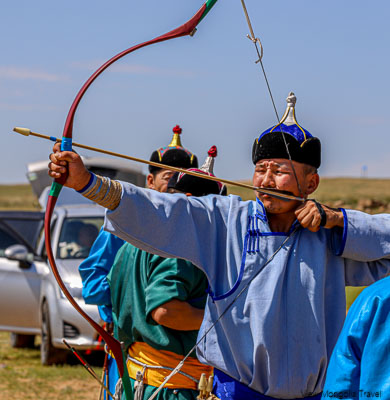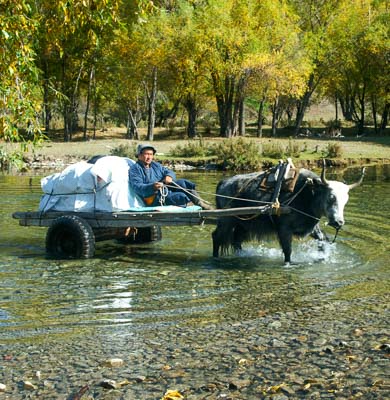Itinerary
July 6, Day 1: Arrive in Ulaanbaatar
Our driver will greet you at the airport and transfer you to a centrally located hotel. Relax and explore the city while staying in a superb location hotel.
Accommodation: 3* hotel

July 7, Day 2: Start countryside tour to Amarbayasgalant Monastery
In the morning, drive to the stunning architectural old monastery Amarbaysgalant. On your way, you will visit Darkhan city and have lunch. Arrive at Amarbayasgalant monastery late afternoon and check in at a ger camp close to the monastery. After some time, visit the beautiful monastery and hike up the foothills of Burenkhaan Mountain to see Buddha sculptures and big stupas. From the tops of the hills, you can have gorgeous views of the Iven River Valley and the whole monastery.
Accommodation: Ger camp
Meals: Breakfast, Lunch, Dinner
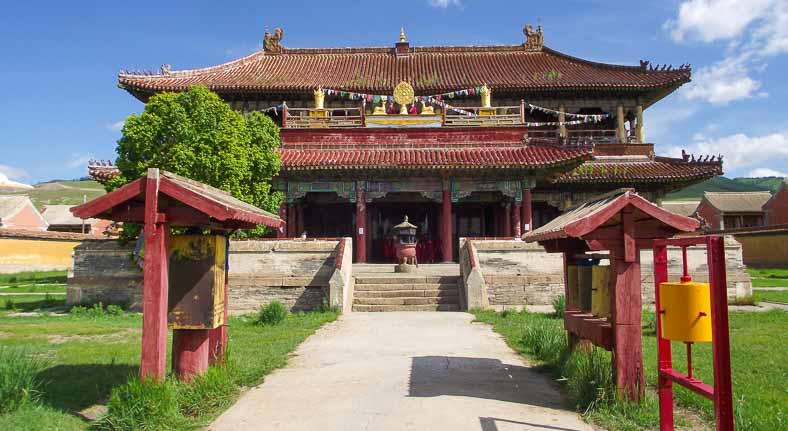
July 8, Day 3: Urantogoo extinct volcano
Along the way to Urantogoo extinct volcano, we will drive via Erdenet copper mine city and a central town of Bulgan province. The landscapes will change into more forested areas. Urantogoo volcano became extinct 800,000 years ago. The volcano's inner and outer northern slope is covered with trees and has a small lake. The volcano top is accessible after some challenging hike up, and the vista is awe-inspiring once you are on the top.
Accommodation: Ger camp
Meals: Breakfast, Lunch, Dinner

July 9, Day 4: Khuvsgul Lake
The journey continues to one of the world's freshest pure-water lakes, Lake Khuvsgul. This 136 km-long, 38 km-wide lake lies 1600m above sea level in the middle of the Siberian taiga forest and among majestic sheer rock mountains. The driving to the lake takes place on paved roads with scenic views. Arrive at Murun, a central town of Khuvsgul at lunchtime. After lunch, continue the journey and arrive at the lake late afternoon. The lake and its surrounding area are pristine and have much to offer its guests. Enjoy nature and relax after long driving or have some optional activities of hiking, bird watching, climbing a mountain, flower watching, etc. Motorboating and kayaking are available at the base of additional payment.
Accommodation: Ger camp
Meals: Breakfast, Lunch, Dinner
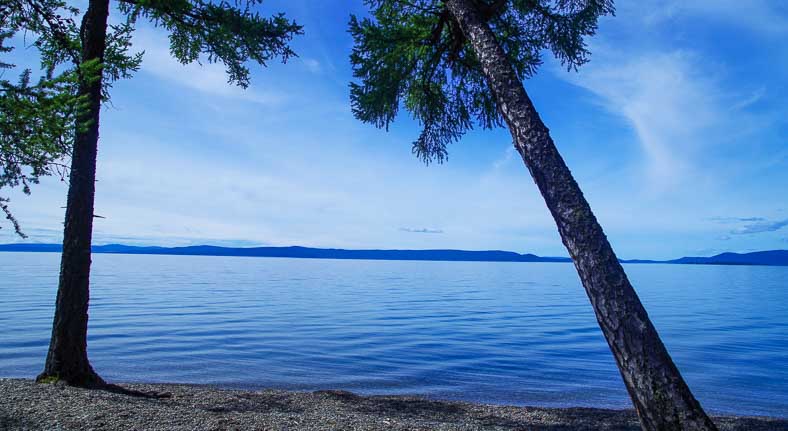
July 10, Day 5: Participate in the local Naadam Festival
Today, you will drive short to attend the Naadam, held close to a small village Hatgal on the western shore of Khuvsgul Lake. See the main events of the festival, such as horse racing, wrestling, and archery, apart from seeing how Mongolians celebrate their festival by wearing their finest traditional clothes and riding their nicest horses. You can even challenge yourself by participating in wrestling, archery, and other games. You also see the Naadam commerce and taste the Naadam main dish Huushuur. You will visit reindeer people on your way back to the ger camp. Reindeer herding Tsaatan people live in the depths of the taiga forest. A few reindeer are the primary resource of their livelihood. In the summer months, some reindeer families move down from the Taiga mountains close to the lake to supplement their income.
Accommodation: Ger camp
Meals: Breakfast, Lunch, Dinner
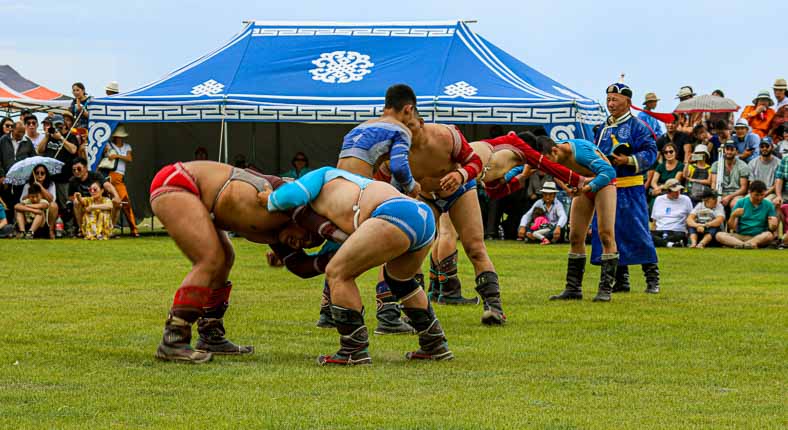
July 11, Day 6: Visit Reindeer herders, see deer stones and Ulziit Khishig camp
In the morning, you will visit the Reindeer herders. Reindeer herding Tsaatan people live in the depths of the taiga forest. A few reindeer are the primary resource of their livelihood. In the summer months, some reindeer families move down from the Taiga mountains close to the lake to supplement their income. They live in huts covered with canvas or animal skins, even in the cold winter. The remoteness of the Taiga forest makes their life entirely dependent on nature. They know well how to use herbs and plants for meals and medicinal purposes. They are well known for their famous Shamans. The reindeer family we will visit this day will have moved from the depths of Taiga near the lake. The journey continues with an exploration of ancient deer stones. Deer stones spread widely throughout Central Asia and are the first monuments of humans; the earliest of them belong to the 13th to the 9th century BC, while they mostly date back to The Bronze Age. On restored, standing stones, pictures including the sun, the moon, belts, knives, and jumping deer are carved fantastically. The journey continues through the mountain valleys on rough roads and arrives at a ger camp. If you are an active traveler, you can climb a mountain, where you will see the surrounding beautiful area in bird's eyes and get a cellphone reception signal to contact your loved ones.
Accommodation: Ger camp
Meals: Breakfast, Lunch, Dinner
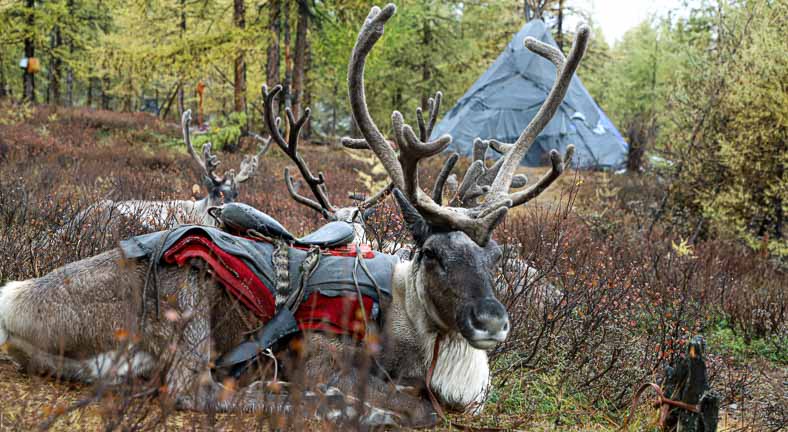
July 12 to 13, Day 7-8: Khorgo Terkhiin Tsagaan National Park
The Khorgo Terkhiin Tsagaan National Park was established to protect the spectacular mountain scenery and endangered species of its flora & fauna. There are several extinct volcanoes within the national park area. Among them, the Khorgo volcano is the easiest accessible and most spectacular one. Astonishingly beautiful, clear water lake Terkhiin Tsagaan (known as Great White Lake) formed after lava flows from the volcanoes blocked the north and south water access from the Terkh River. Late afternoon, we climb the Khorgo Volcano, now extinct for nearly 8000 years. Its surrounding area has several caves and hideouts. That is why the volcano was named “Khorgo,” meaning shelter. We arrive at the ger camp late afternoon and relax after the bumpy road adventure. The next day, you explore the beautiful national park, climb the volcano top, and walk along the volcano rim with outstanding views of surrounding areas; a small village can be seen from the volcano, as well as a bird’s eye view of Terhkiin Tsagaan Lake. Next, travel to Tekhiin Tsagaan Lake and explore some caves.
Accommodation: Ger camp
Meals: Breakfast, Lunch, Dinner

July 14, Day 9: Erdenezuu Monastery in the Orkhon River Valley
On the way, you will see the Chuluut River lava canyon and Tsetserleg town market. Kharkhorin, formerly known as Kharakhorum, was the capital of Genghis Khaan's Great Mongol Empire in the 13th century. After the move of the Mongolian capital to Beijing, and the fall of the Empire, Karakorum was abandoned and then destroyed by Min soldiers in 1388. Today, in the broad valley of the Orkhon River, the awe-inspiring ancient monastery Erdenezuu coexists with the modern town Kharkhorin established on ancient capital Kharakhorum site. You will visit the temple museum and active temple and see Turtle Stone, which marked the ancient city Kharkhorum boundary.
Accommodation: Ger camp
Meals: Breakfast, Lunch, Dinner
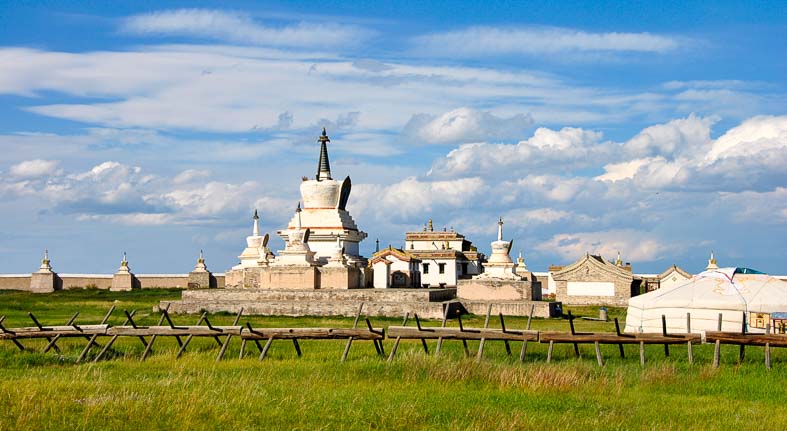
July 15, Day 10: Visit the Kharakhorum museum, Elsentasarkhai semi-desert, camel riding, and return to Ulaanbaatar
In the morning, you will visit Kharkhorum Museum to learn about Mongolia's past and see the remnant of Kharakhorum city. The journey continues to Elsentasarkhai semi-desert. Ride two-humped camels and return to Ulaanbaatar in the evening
Accommodation: 3* hotel
Meals: Breakfast, Lunch
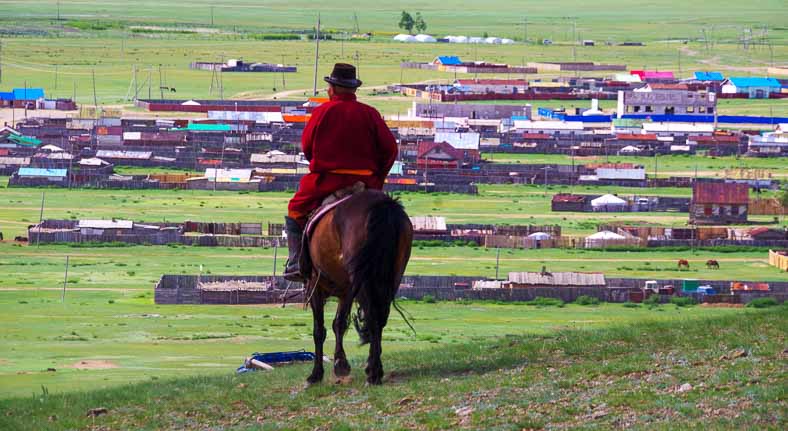
July 16, Day 11: Departure
The driver meets you at your hotel and transfer to the airport.
Meals: Breakfast


